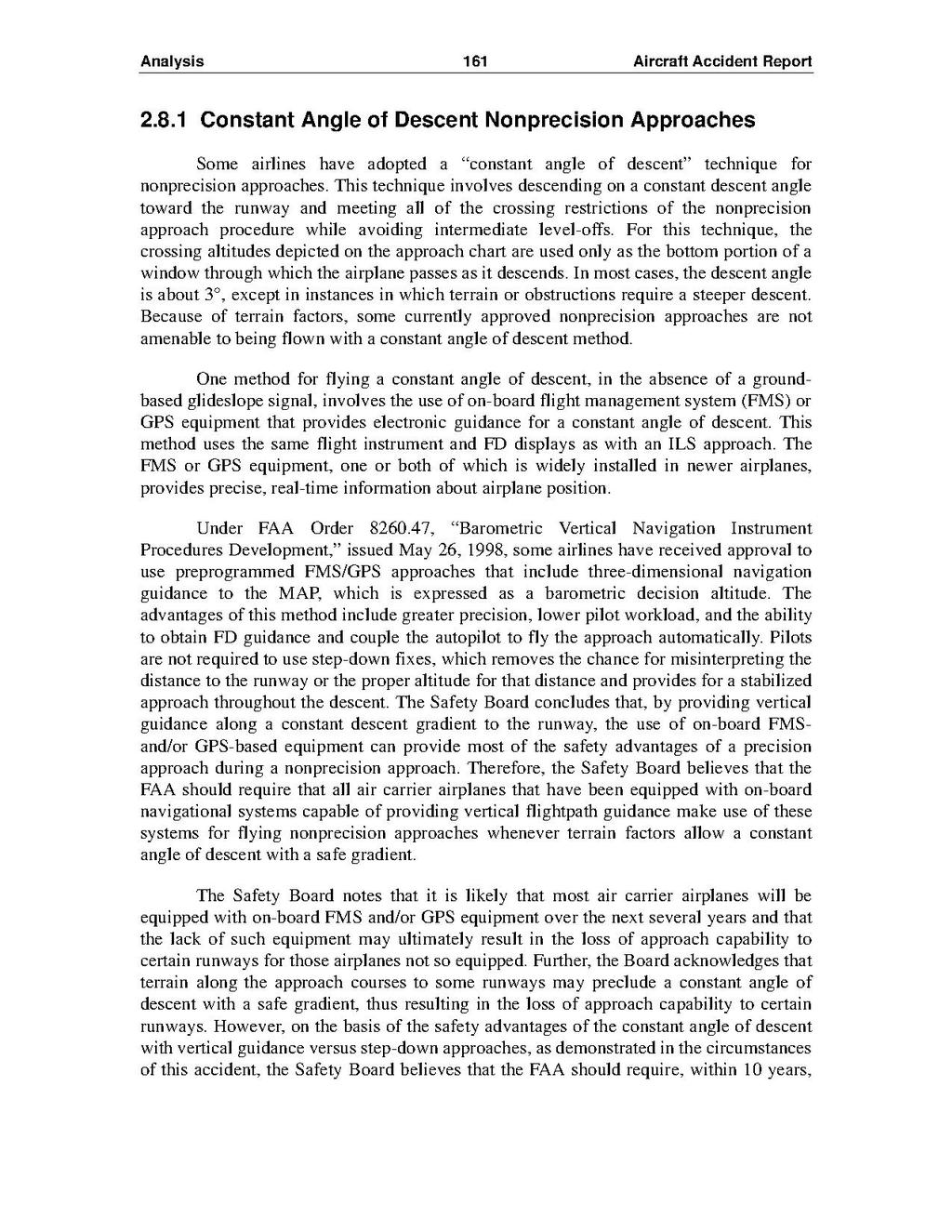2.8.1 Constant Angle of Descent Nonprecision Approaches
Some airlines have adopted a "constant angle of descent" technique for nonprecision approaches. This technique involves descending on a constant descent angle toward the runway and meeting all of the crossing restrictions of the nonprecision approach procedure while avoiding intermediate level-offs. For this technique, the crossing altitudes depicted on the approach chart are used only as the bottom portion of a window through which the airplane passes as it descends. In most cases, the descent angle is about 3°, except in instances in which terrain or obstructions require a steeper descent. Because of terrain factors, some currently approved nonprecision approaches are not amenable to being flown with a constant angle of descent method.
One method for flying a constant angle of descent, in the absence of a groundbased glideslope signal, involves the use of on-board flight management system (FMS) or GPS equipment that provides electronic guidance for a constant angle of descent. This method uses the same flight instrument and FD displays as with an ILS approach. The FMS or GPS equipment, one or both of which is widely installed in newer airplanes, provides precise, real-time information about airplane position.
Under FAA Order 8260.47, "Barometric Vertical Navigation Instrument Procedures Development," issued May 26, 1998, some airlines have received approval to use preprogrammed FMS/GPS approaches that include three-dimensional navigation guidance to the MAP, which is expressed as a barometric decision altitude. The advantages of this method include greater precision, lower pilot workload, and the ability to obtain FD guidance and couple the autopilot to fly the approach automatically. Pilots are not required to use step-down fixes, which removes the chance for misinterpreting the distance to the runway or the proper altitude for that distance and provides for a stabilized approach throughout the descent. The Safety Board concludes that, by providing vertical guidance along a constant descent gradient to the runway, the use of on-board FMSand/or GPS-based equipment can provide most of the safety advantages of a precision approach during a nonprecision approach. Therefore, the Safety Board believes that the FAA should require that all air carrier airplanes that have been equipped with on-board navigational systems capable of providing vertical flightpath guidance make use of these systems for flying nonprecision approaches whenever terrain factors allow a constant angle of descent with a safe gradient.
The Safety Board notes that it is likely that most air carrier airplanes will be equipped with on-board FMS and/or GPS equipment over the next several years and that the lack of such equipment may ultimately result in the loss of approach capability to certain runways for those airplanes not so equipped. Further, the Board acknowledges that terrain along the approach courses to some runways may preclude a constant angle of descent with a safe gradient, thus resulting in the loss of approach capability to certain runways. However, on the basis of the safety advantages of the constant angle of descent with vertical guidance versus step-down approaches, as demonstrated in the circumstances of this accident, the Safety Board believes that the FAA should require, within 10 years,
